It almost seems self-evident to state that the Philippines is a lovely place to visit. What makes it even more intriguing is the Filipinos’ extraordinary appetite for food.
A typical Filipino day includes three meals, each of which includes at least a cup of rice. Despite this, people still enjoy snacking in between meals, which is where Philippine street food comes into play.
Originally, street snacks were thought to be merely pantawid gutom, or a way to satisfy hunger while racing from one thing to the next. And, because Filipinos have a penchant for blending tastes and making the most of whatever ingredients they have on hand, they’ve created delectable quick nibbles with a twist.
Here is a list of Filipino street foods that every traveler should taste!
Isaw
The isaw Philippines is one of the most popular Filipino street meals. Typically, hog or chicken intestines are grilled or deep-fried. Don’t worry, the intestines are carefully cleansed before grilling.
Isaw Philippines has been around since the 1970s, which is a fun fact. When cattle supply was plentiful in the 1950s, street food sellers decided to offer more expensive portions of meat, but when the country faced an economic crisis in the 1970s, scrap parts of pork and chicken suddenly became lucrative, prompting them to begin selling isaw.
Isaw is a staple of street food in the Philippines, and no essay on the subject would be complete without it.
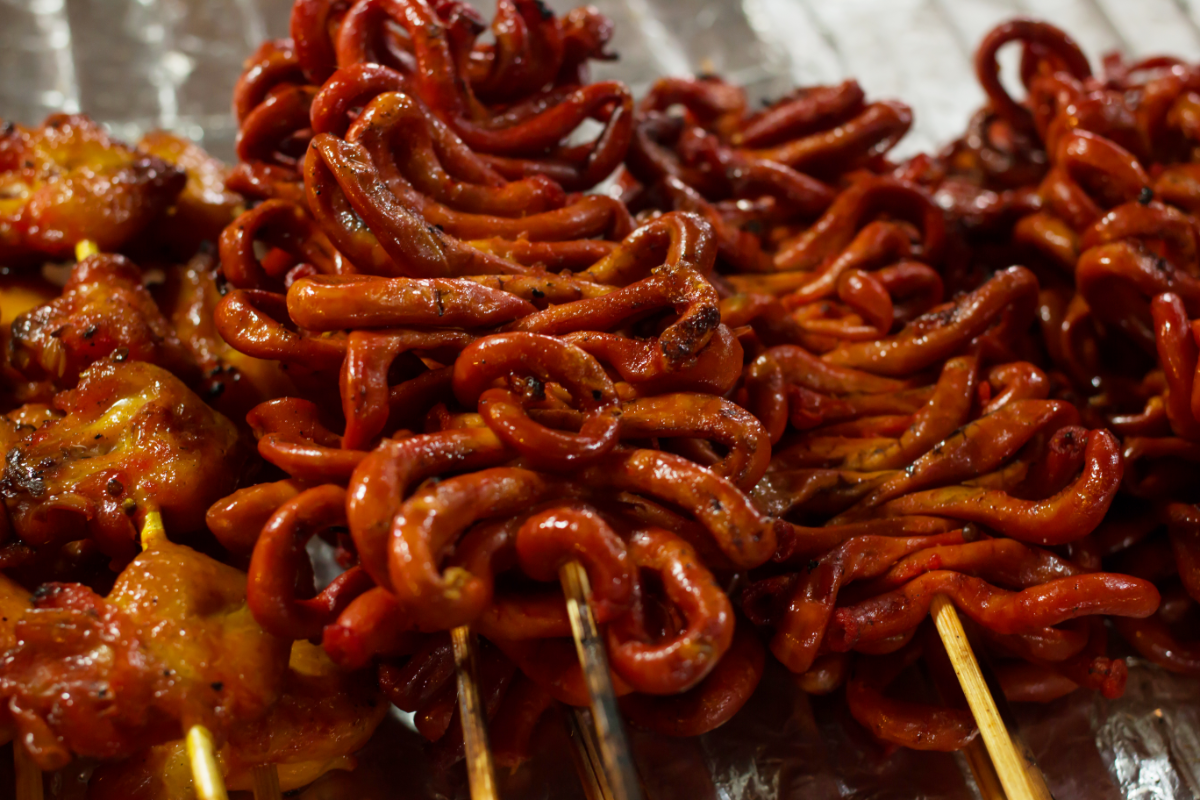
Betamax
Betamax is pig or chicken blood that has been coagulated and formed into squares. The name comes from its resemblance to the Betamax video cassette tape, which comes in a box.
Betamax has no unpleasant odor or taste, despite the fact that it is manufactured from blood. In reality, it has a mild to bitter flavor that begs for a side of hot vinegar.

Fishball
Almost everything in the Philippines is becoming more expensive, except from fishballs. Filipinos have even coined the phrase “fish balls na lang ang hindi nagmamahal,” which means that fishballs are the only thing that remains cheap while other prices continue to hike. The food describes as the taste preference of the Filipino culture for more than a decade and no one can surpass how we acknowledge this street food.
It is the Philippines’ cheapest street dish, costing only PHP 0.50 per piece.
Fishballs in the Philippines are groundfish that have been flattened and skewered before being deep-fried. They are commonly made from pollock or cuttlefish and a lot of flour.
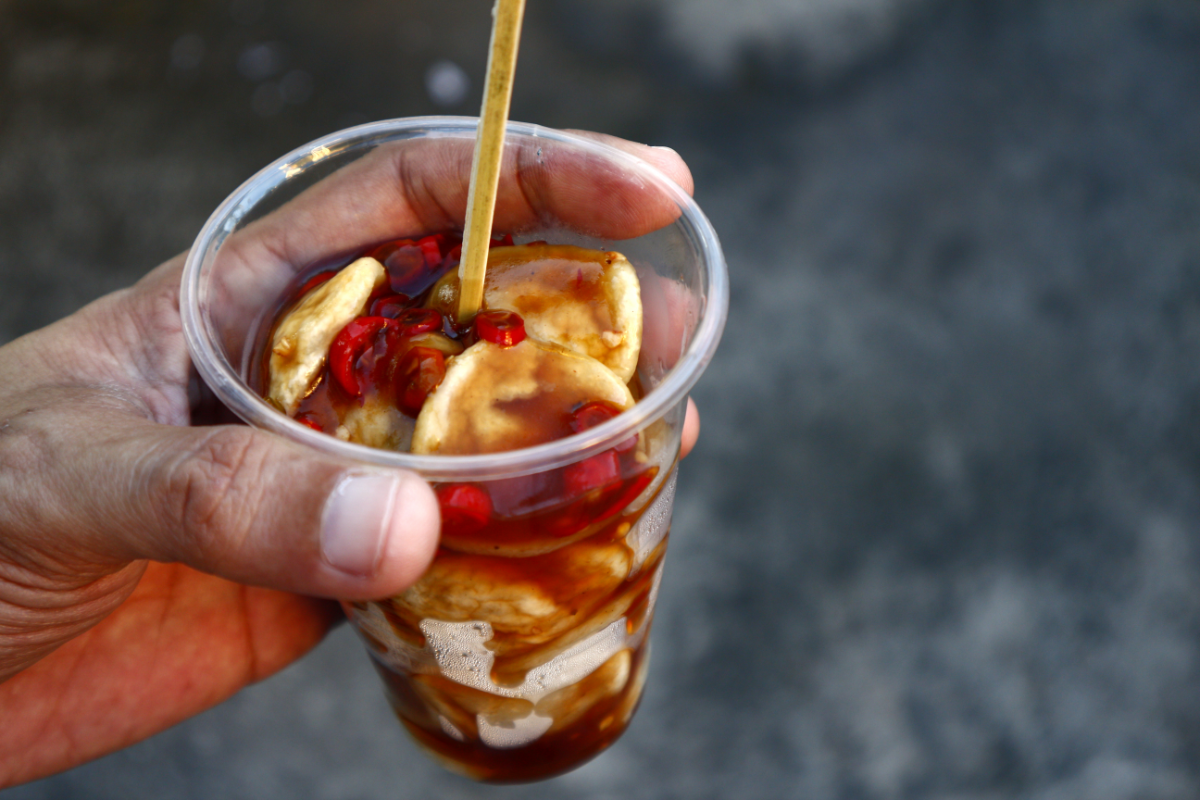
Kwek-kwek
Quail eggs are used in this popular Filipino street snack, and the vivid orange covering is formed of batter. The sauce is responsible for the majority of its deliciousness, and each street food vendor has their own recipe. Vinegar with chilis and garlic is the finest option.
And here’s a fun fact about kwek kwek’s history. “A local legend tells how kwek-kwek was accidentally born when a balut vendor in Cubao spilled her merchandise,” according to Esquire Magazine.
She peeled off the shells, wrapped the eggs in flour, and fried them, not wanting to waste what was left of the balut. “Kwek-kwek” is said to mean “bird chirps.”
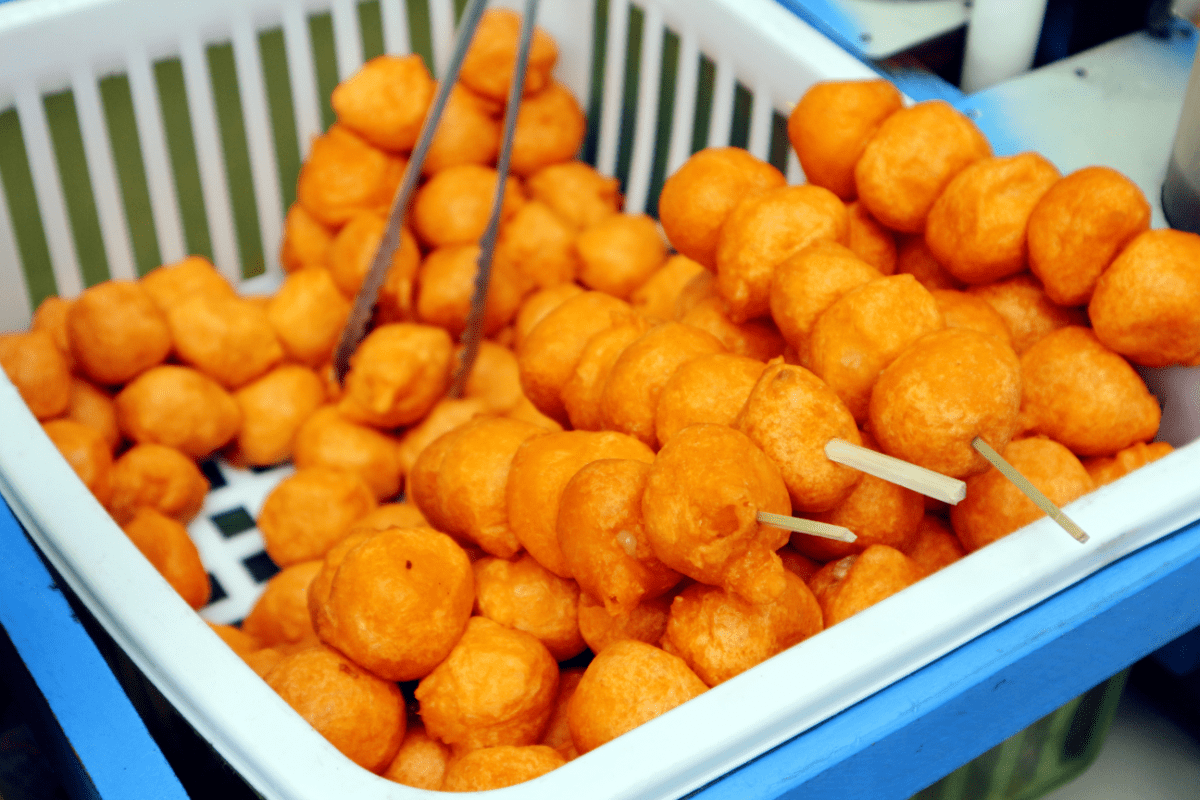
Cheese sticks
Unlike the breadcrumb-coated and ooey-gooey mozzarella sticks popular in France, the Pinoy street food style cheese sticks are made with cheddar cheese and deep-fried till golden and crispy. It’s accompanied by a pink dip made from ketchup and mayonnaise.
This street food in the Philippines is something that every traveler should eat.
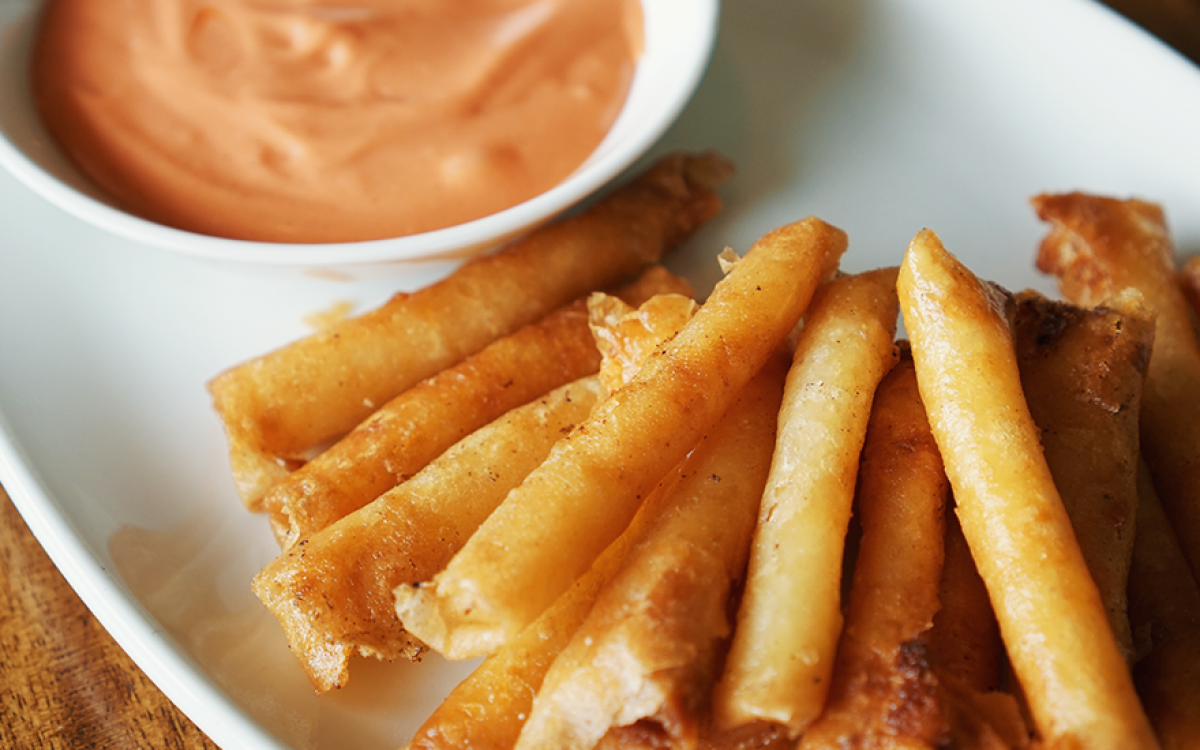
Squid balls
Squid balls in the Philippines are similar to fish balls, however they are fluffier and do not get limp when cooked. Squid balls are made from squid, all-purpose flour, cornstarch, garlic, salt, and pepper, as the name suggests.
Squid balls are one of the most commonly purchased and consumed street delicacies in the Philippines.
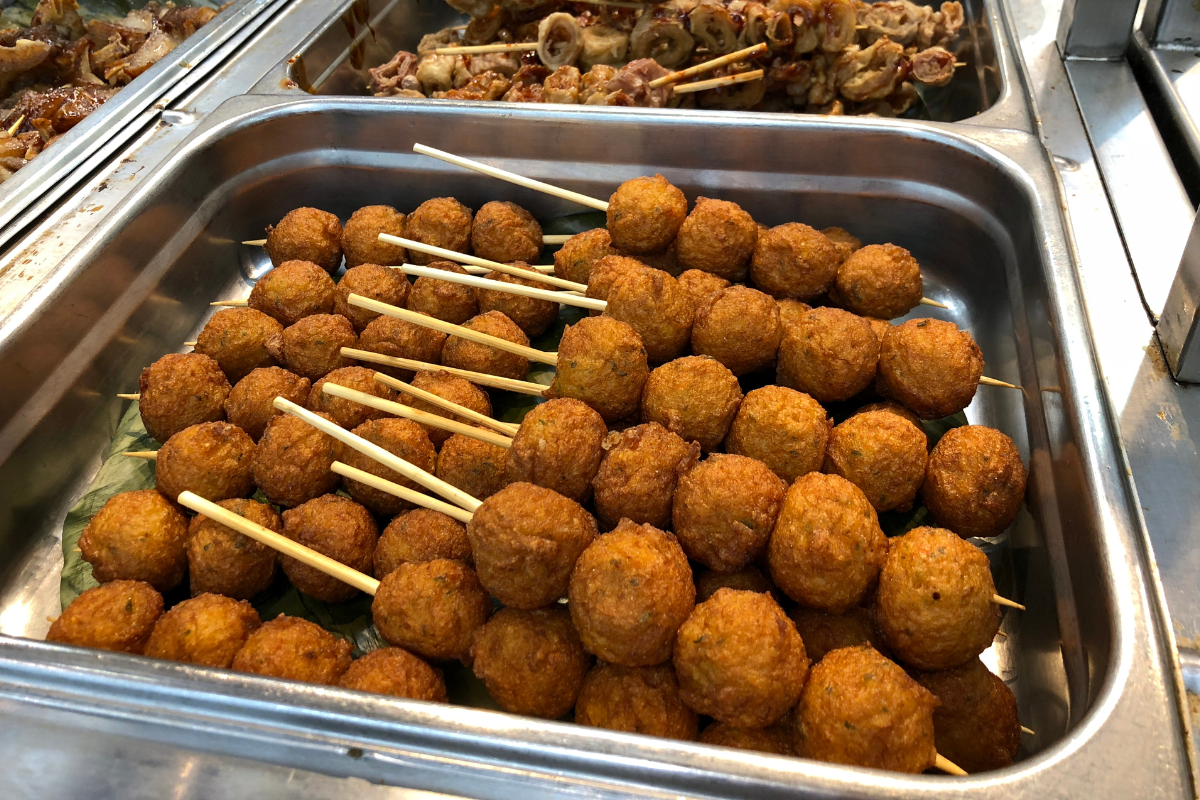
Kikiam
Kikiam is a Filipino street snack that originated in Chinese cuisine and consists of minced pork and veggies in its purest form. However, unlike the Chinese version, the kikiam Philippines has a lot of fillers and fish meat. They’re approximately the size of a finger and brown.
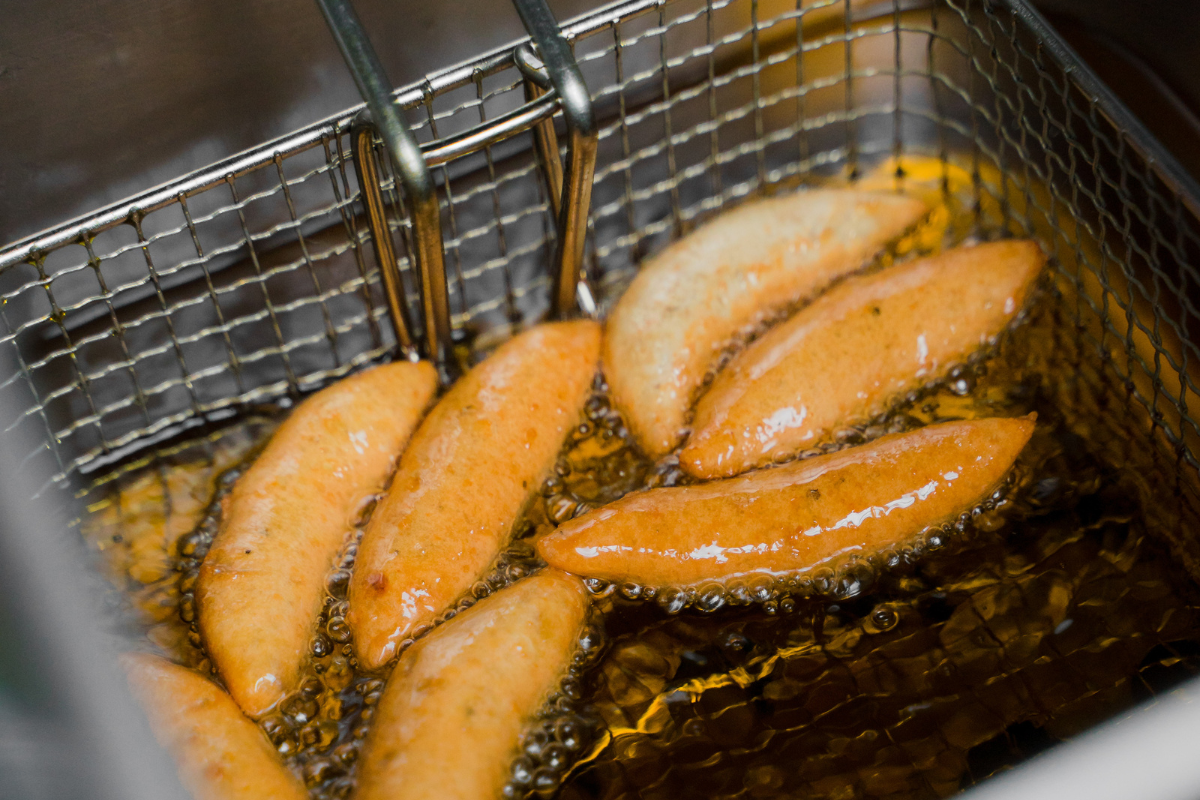
Sorbetes
Sorbetes, often known as filthy ice cream, are a popular Pinoy dessert that was introduced during the American occupation. The sorbetero, who scoops ice cream into cones or bread buns from colorful wooden push carts, sells this delectable treat on the streets.
Dirty ice cream isn’t quite filthy. The phrase “clean” ice cream is exclusively used to distinguish this dessert from store-bought “clean” ice cream. Sorbetes is typically made using cassava flour and coconut or powdered milk.
Chocolate, cheese, ube, mango, and langka are all popular flavors.

Turon
Turon, another banana-sweet street food, is one of Manila’s most well-known street delicacies.
For Filipinos, it’s a favorite food-on-the-go option because it’s portable. Half-baked bananas are wrapped in a spring roll wrapper. It’s also deep-fried and dusted with caramelized brown sugar.
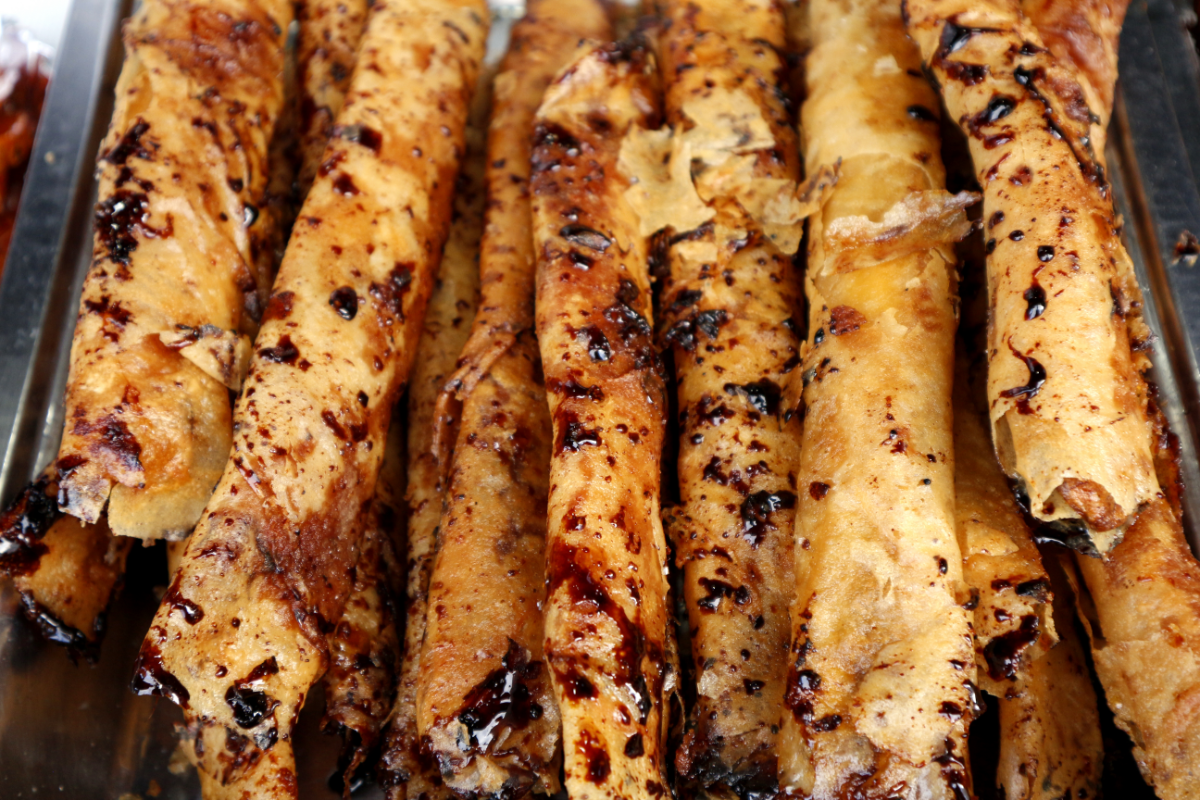
Banana cue
Banana cue is a delicious snack consisting of deep-fried bananas coated in caramelized brown sugar that can be eaten on the move. The bananas are skewered, same like the other popular street meal in the Philippines, pig barbecue. Camote cue, a sweet potato-based substitute, is another option.

Taho
Fresh soft/silken Tofu, Arnibal (brown sugar syrup), and Sago “pearls” make up Taho, a Filipino delicacy (which are similar to Tapioca pearls). This characteristic sweet is a traditional comfort meal that can be found all across the Philippines.

Iskrambol
Crushed ice, diced colored gelatin, sago, and condensed milk or powdered milk and sugar are blended together with an egg beater and topped with chocolate syrup in Iskrambol, a local frosty concoction.

Balut
If you’ve been looking for a list of street food in the Philippines, you’ve definitely already come across the most talked-about Filipino delicacy: balut.
It’s a fertilized duck egg that’s 16 to 21 days old and contains not just a yolk but also a semi-developed duck embryo that’s eaten right out of the shell! Some people find it revolting, but with a little getting used to it, you’ll realize that this unusual Filipino street dish is something you must taste.
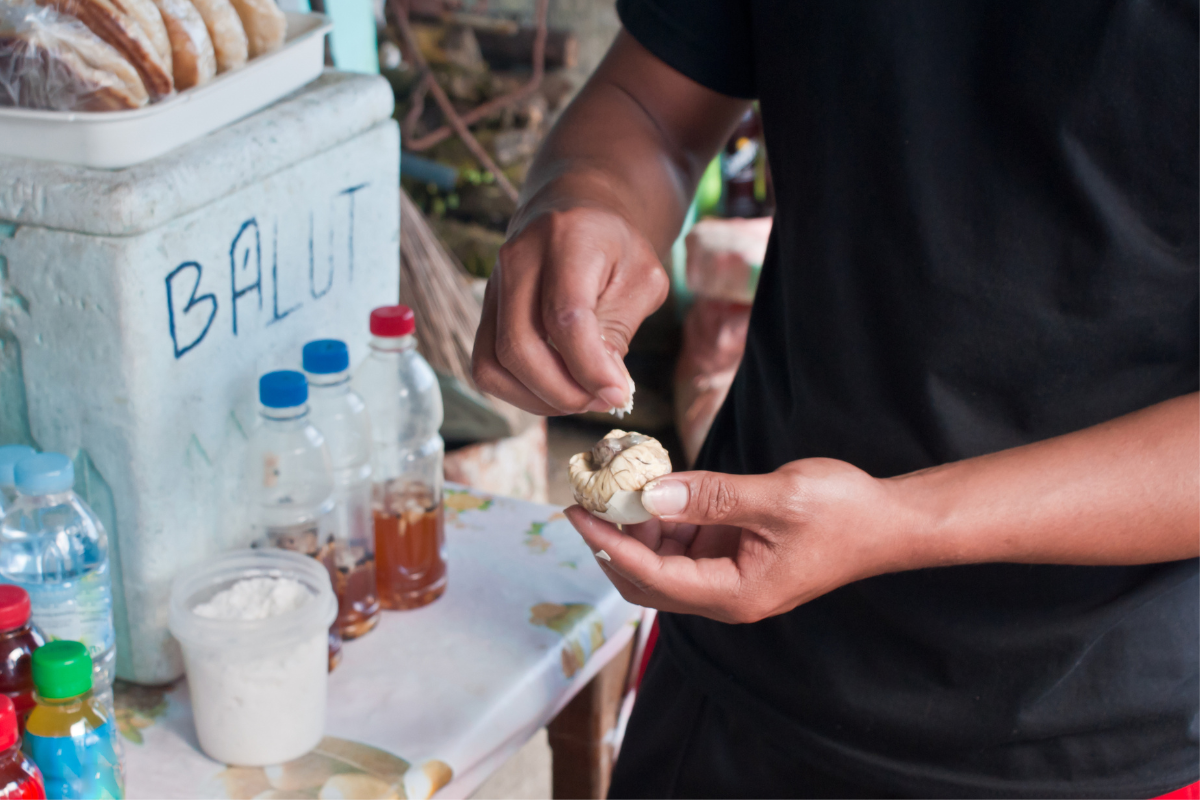
Bottomline
In particular, when it comes to Filipino cuisine, street food has become a significant food segment in its own right. It’s inexpensive, convenient, and a fantastic way to learn about a country’s culture. In the Philippines, there are a plethora of street food excursions to choose from.
The way Filipinos live has been shaped by food. Apart from the cuisine, there are valuable memories exchanged with whomever they are with, making it even more special. Food binds strangers, friends, and even families together (regardless of lifestyle differences).
This is a prevalent value among Asians, but Filipinos take it to a whole new level.
For more interesting blogs, please visit our website at www.mgsinsurance.ph